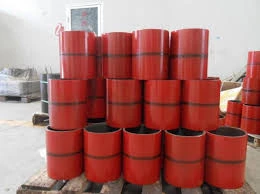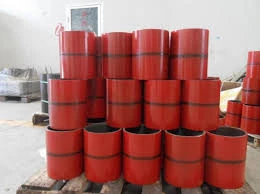- Afrikaans
- Albanian
- Amharic
- Arabic
- Armenian
- Azerbaijani
- Basque
- Belarusian
- Bengali
- Bosnian
- Bulgarian
- Catalan
- Cebuano
- Corsican
- Croatian
- Czech
- Danish
- Dutch
- English
- Esperanto
- Estonian
- Finnish
- French
- Frisian
- Galician
- Georgian
- German
- Greek
- Gujarati
- Haitian Creole
- hausa
- hawaiian
- Hebrew
- Hindi
- Miao
- Hungarian
- Icelandic
- igbo
- Indonesian
- irish
- Italian
- Japanese
- Javanese
- Kannada
- kazakh
- Khmer
- Rwandese
- Korean
- Kurdish
- Kyrgyz
- Lao
- Latin
- Latvian
- Lithuanian
- Luxembourgish
- Macedonian
- Malgashi
- Malay
- Malayalam
- Maltese
- Maori
- Marathi
- Mongolian
- Myanmar
- Nepali
- Norwegian
- Norwegian
- Occitan
- Pashto
- Persian
- Polish
- Portuguese
- Punjabi
- Romanian
- Russian
- Samoan
- Scottish Gaelic
- Serbian
- Sesotho
- Shona
- Sindhi
- Sinhala
- Slovak
- Slovenian
- Somali
- Spanish
- Sundanese
- Swahili
- Swedish
- Tagalog
- Tajik
- Tamil
- Tatar
- Telugu
- Thai
- Turkish
- Turkmen
- Ukrainian
- Urdu
- Uighur
- Uzbek
- Vietnamese
- Welsh
- Bantu
- Yiddish
- Yoruba
- Zulu
ມ.ກ. . 23, 2025 04:50
Back to list
Casing Pup Joint
In the world of oil and gas drilling, pup joints may seem like a minor component, but their significance is profound. These short sections of pipe are indispensable in adjusting the length of drill strings, ensuring that operations run smoothly and efficiently. Understanding pup joint specifications is crucial for operators and engineers to enhance the performance, safety, and reliability of drilling operations.
Surface treatment and coating are other vital considerations in pup joint specifications. A suitable surface treatment can significantly enhance the durability and lifespan of the pup joint, especially in corrosive environments often encountered in offshore drilling and sour gas fields. Common coatings include zinc phosphating, which provides a sacrificial layer to fight rust, or more advanced options like polymer coatings that offer superior resistance to chemical attacks and mechanical wear. Advanced digital monitoring technologies have begun to impact the specifications of pup joints as well. Now, some pup joints are equipped with sensors that provide real-time data on load, temperature, and stress. This innovation allows for predictive maintenance, potentially preventing catastrophic failures by alerting operators before conditions reach critical levels. While these high-tech additions increase upfront costs, they can be a worthwhile investment for long-term operational efficiency and safety. Pup joints must also meet stringent industry standards and certifications to ensure compliance and quality assurance. Standards such as the American Petroleum Institute (API) specifications provide guidelines to maintain the quality and uniformity of pup joints. These standards cover various aspects, including material requirements, manufacturing processes, testing, marking, and handling. Adhering to such standards assures operators that the pup joints will perform reliably under the harshest conditions. Understanding and selecting the correct specifications for pup joints is not merely a technical exercise; it requires a confluence of experience, expertise, and trust in the equipment's ability to perform under extreme conditions. Operators and engineers must consider the specific requirements of their drilling project and collaborate with manufacturers who have a proven track record of delivering high-quality pup joints. By doing so, they can ensure that each component of the drill string contributes to the overall success and efficiency of their drilling operations. In the rapidly evolving landscape of oil and gas exploration, pup joint specifications are more important than ever. As drilling technologies advance, the demand for precision, strength, and reliability continues to grow. Keeping abreast of the latest developments and understanding the crucial role of pup joints will help operators and engineers make informed decisions, ultimately leading to more efficient and safer drilling operations.


Surface treatment and coating are other vital considerations in pup joint specifications. A suitable surface treatment can significantly enhance the durability and lifespan of the pup joint, especially in corrosive environments often encountered in offshore drilling and sour gas fields. Common coatings include zinc phosphating, which provides a sacrificial layer to fight rust, or more advanced options like polymer coatings that offer superior resistance to chemical attacks and mechanical wear. Advanced digital monitoring technologies have begun to impact the specifications of pup joints as well. Now, some pup joints are equipped with sensors that provide real-time data on load, temperature, and stress. This innovation allows for predictive maintenance, potentially preventing catastrophic failures by alerting operators before conditions reach critical levels. While these high-tech additions increase upfront costs, they can be a worthwhile investment for long-term operational efficiency and safety. Pup joints must also meet stringent industry standards and certifications to ensure compliance and quality assurance. Standards such as the American Petroleum Institute (API) specifications provide guidelines to maintain the quality and uniformity of pup joints. These standards cover various aspects, including material requirements, manufacturing processes, testing, marking, and handling. Adhering to such standards assures operators that the pup joints will perform reliably under the harshest conditions. Understanding and selecting the correct specifications for pup joints is not merely a technical exercise; it requires a confluence of experience, expertise, and trust in the equipment's ability to perform under extreme conditions. Operators and engineers must consider the specific requirements of their drilling project and collaborate with manufacturers who have a proven track record of delivering high-quality pup joints. By doing so, they can ensure that each component of the drill string contributes to the overall success and efficiency of their drilling operations. In the rapidly evolving landscape of oil and gas exploration, pup joint specifications are more important than ever. As drilling technologies advance, the demand for precision, strength, and reliability continues to grow. Keeping abreast of the latest developments and understanding the crucial role of pup joints will help operators and engineers make informed decisions, ultimately leading to more efficient and safer drilling operations.
Next:
Latest news
-
Tubing Pup Joints: Essential Components for Oil and Gas OperationsNewsJul.10,2025
-
Pup Joints: Essential Components for Reliable Drilling OperationsNewsJul.10,2025
-
Pipe Couplings: Connecting Your World EfficientlyNewsJul.10,2025
-
Mastering Oilfield Operations with Quality Tubing and CasingNewsJul.10,2025
-
High-Quality Casing Couplings for Every NeedNewsJul.10,2025
-
Boost Your Drilling Efficiency with Premium Crossover Tools & Seating NipplesNewsJul.10,2025
Related Products







